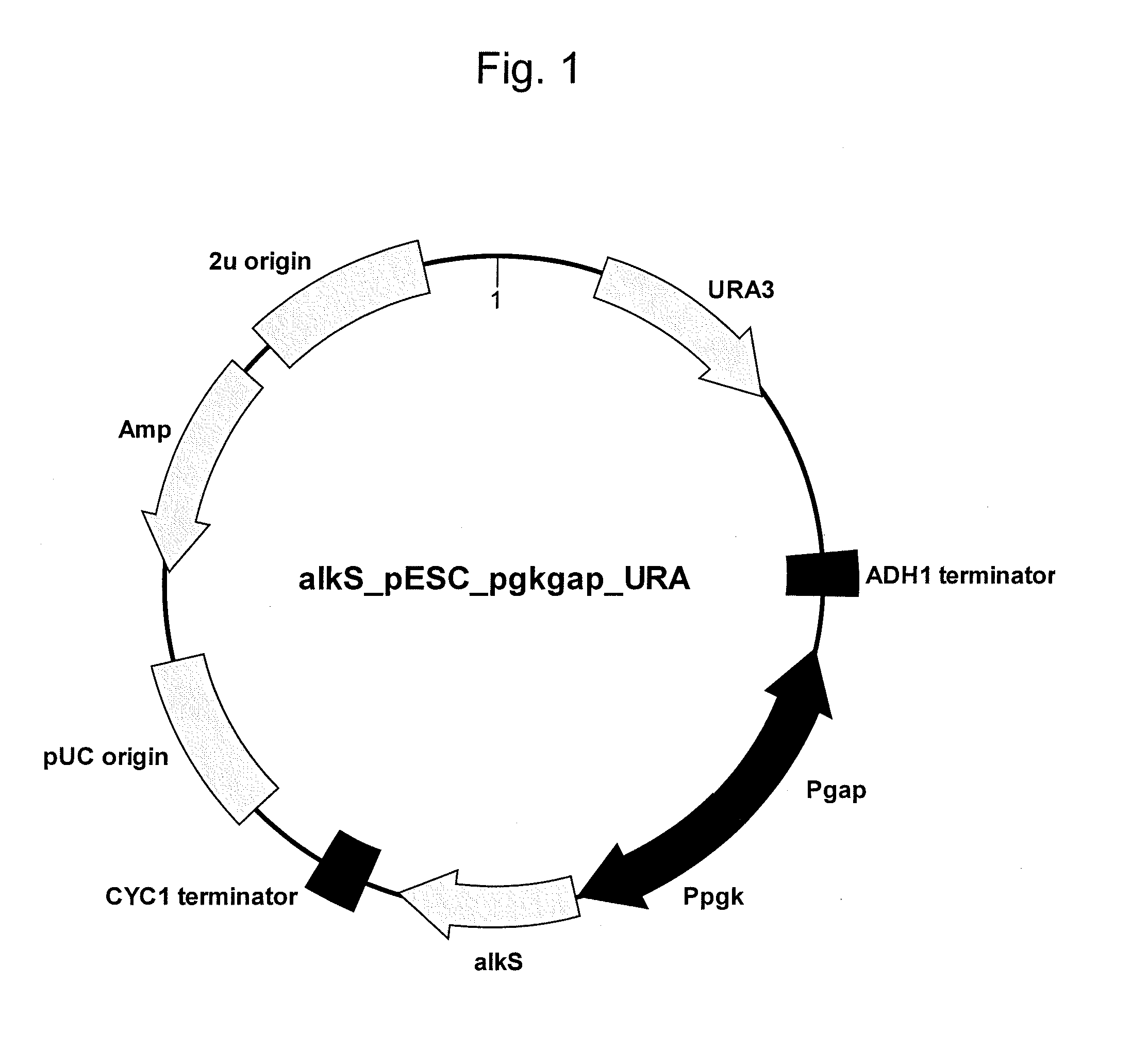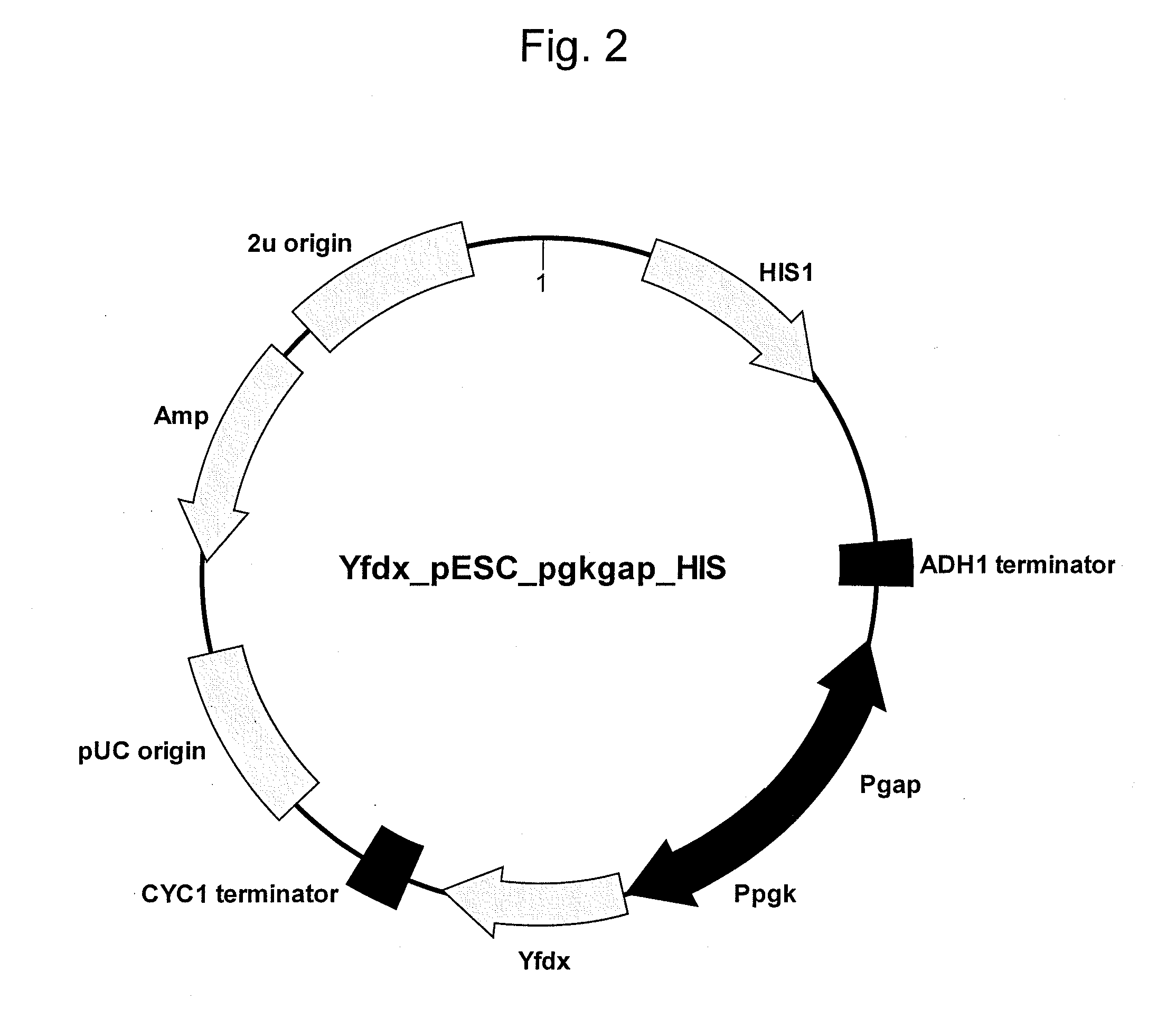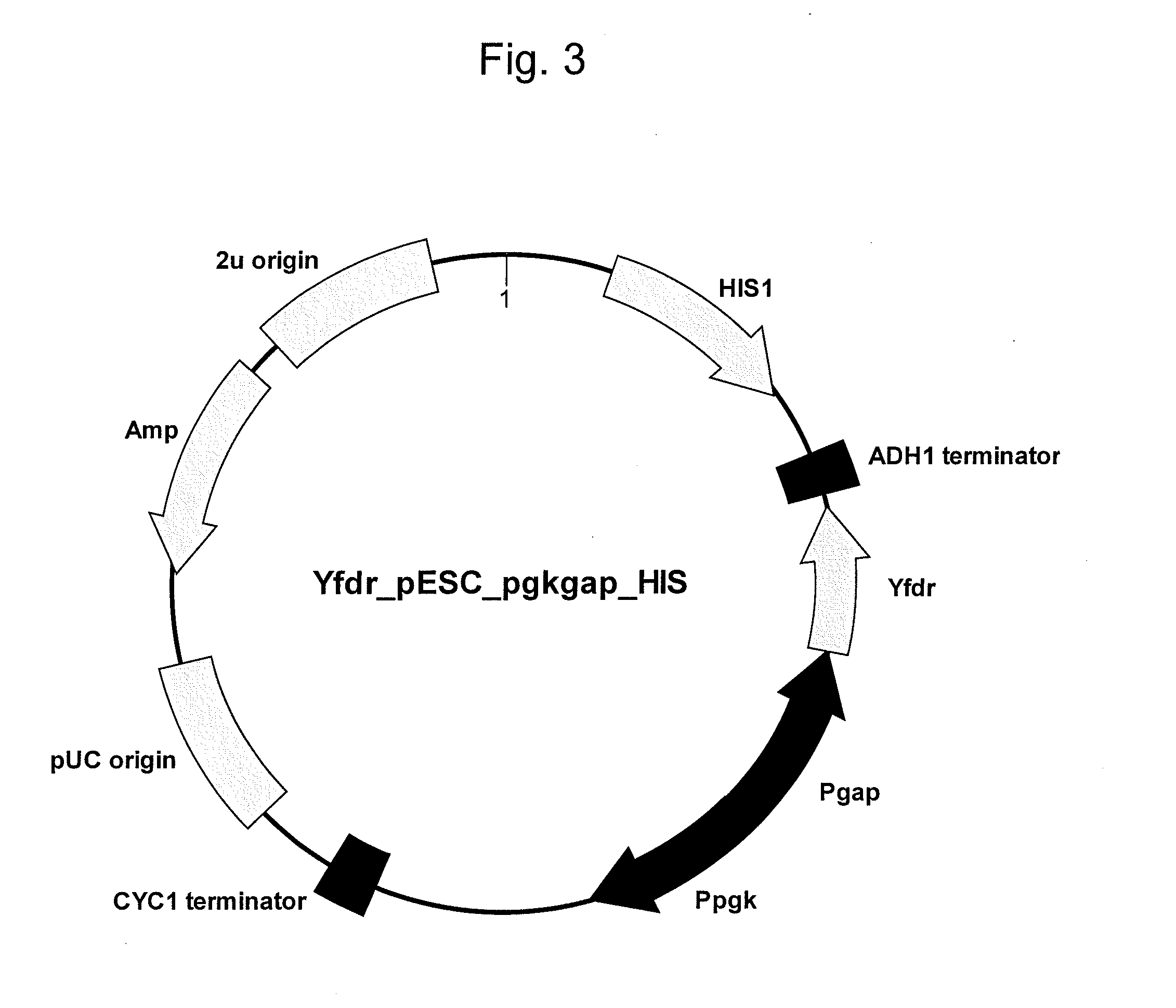Method for producing alkane and recombinant microorganism capable of synthesizing alkane
a technology of recombinant microorganisms and alkane, which is applied in the direction of microorganisms, biochemical equipment and processes, enzymes, etc., can solve the problems of insufficient alkane productivity, achieve high production efficiency, improve alkane productivity, and achieve the effect of high production efficiency
- Summary
- Abstract
- Description
- Claims
- Application Information
AI Technical Summary
Benefits of technology
Problems solved by technology
Method used
Image
Examples
example 1
[0063]In this example, recombinant yeast was prepared by imparting thereto the ability to produce alkane and introducing a ferredoxin gene and / or a ferredoxin NADPH reductase gene thereinto, following which the effects of ferredoxin and ferredoxin NADPH reductase on alkane productivity were confirmed.
[0064]For the purpose of constitutive expression of cloned genes, constitutive promoters (Ppgk and Pgap) were inserted into a pESC vector (STRATAGENE). Pgap is a Saccharomyces cerevisiae YPH499-derived Glyceraldehyde-3-Phosphate Dehydrogenase (gap) gene promoter. First, a DNA fragment containing Pgap was obtained by PCR using genomic DNA that had been purified from the YPH499 yeast strain using Gen-torukun (Takara Bio Inc.) as a template. Polymerase used herein was KOD-Plus-Ver. 2 (Toyobo Co., Ltd.). For amplification of the DNA fragment containing Pgap, the following pair of primers were designed and the composition of the reaction solution and reaction cycle conditions were as follows...
experimental example 1
[0096]In this experimental example, recombinant Escherichia coli was prepared by imparting the ability to produce alkane and introducing the ferredoxin gene and / or the ferredoxin NADPH reductase gene, and then the effects of ferredoxin and ferredoxin NADPH reductase on the alkane productivity was confirmed.
[0097]A DNA fragment having an alkane synthase gene (alkS gene) was obtained by PCR using the genomic DNA of Nostoc sp. ATCC27437 as a template. KOD-Plus-Ver.2 (Toyobo Co., Ltd.) was used as polymerase for PCR. For amplification of the DNA fragment having the alkS gene, the following pair of primers were designed and the composition of the reaction solution and reaction cycle conditions were as follows.
(Primer #1) alkS_F,(SEQ ID NO: 19)5′-GCGCGCGGTACCATGCAGCAGGTTGCAGCCG-3′(Primer #2) alkS_R,(SEQ ID NO: 20)5′-GCGCGCCTCGAGTTAAGCTGCTGTAAGTCCGTAG-3′
[Composition of Reaction Solution]
[0098]
Nostoc sp. ATCC27437 genomic DNA (100 ng / μl)1 μl10x buffer for KOD-Plus-Ver.25 μl2 mM dNTPs5 μl25 ...
PUM
| Property | Measurement | Unit |
|---|---|---|
| composition | aaaaa | aaaaa |
| temperature | aaaaa | aaaaa |
| concentration | aaaaa | aaaaa |
Abstract
Description
Claims
Application Information
 Login to View More
Login to View More - R&D
- Intellectual Property
- Life Sciences
- Materials
- Tech Scout
- Unparalleled Data Quality
- Higher Quality Content
- 60% Fewer Hallucinations
Browse by: Latest US Patents, China's latest patents, Technical Efficacy Thesaurus, Application Domain, Technology Topic, Popular Technical Reports.
© 2025 PatSnap. All rights reserved.Legal|Privacy policy|Modern Slavery Act Transparency Statement|Sitemap|About US| Contact US: help@patsnap.com



